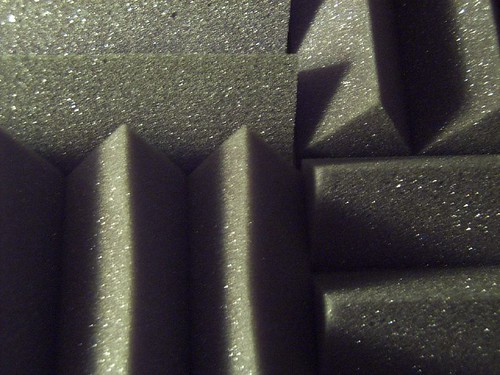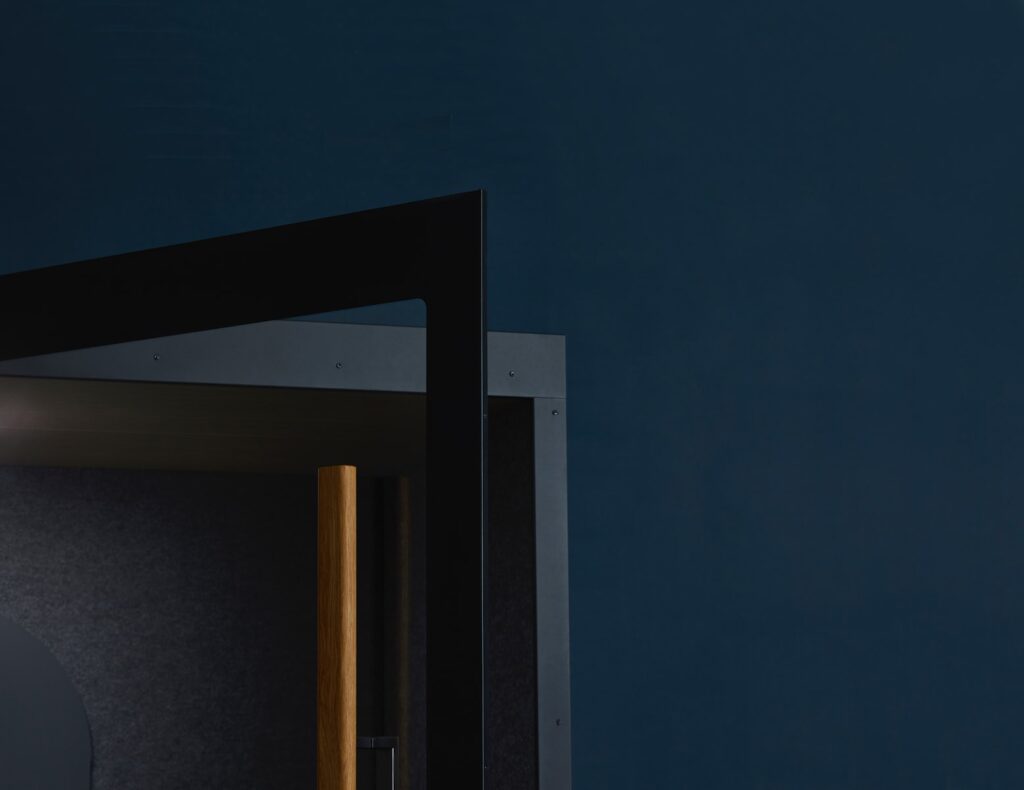
When it comes to sound absorption, lots of ideas come to mind. Not just ideas alone, but theories and perceptions of what will get the job done. However, the first thing that comes to the mind of a layman when sound absorption is mentioned is usually soft materials. And while they are not wrong, the answer still leaves a lot of holes to be filled to get a full understanding. To fully answer the question “What Materials Absorb Sound?” you need to note a few things. Let’s find out.
Here are the principles you’d need to note before you proceed to know the materials that can absorb sound.
- Some materials absorb sound more than others, be they hard or soft materials.
- There are three types of sound absorbers; Panel absorbers, Porous absorbers, and Resonance absorbers.
- While the layman is vague with his soft surface answer for sound absorption, it is usually a good place to start.
These core principles will lay a foundation for whatever you learn in this article today. But don’t be in a hurry, I’ll be elaborating on the points to make you understand better.
Contents
What material can block sound?
For what it’s worth, the term ‘soundproofing’ and ‘sound absorption’ have been used interchangeably by most people, when in fact, they shouldn’t because they are different. Soundproofing is a term that’s used to checkmate a sound or noise from entering or leaving a room, while ‘sound absorption’ does not guarantee that a sound or noise can be stopped from entering or leaving a room.
Simply put, ‘soundproofing’ is an absolute term while ‘sound absorption’ only comes close, but not close enough.
When it comes to an average homeowner, ‘sound absorption’ isn’t a bad idea at all as its techniques can be used to create a home studio. While ‘soundproofing’ is mostly reserved for a more professional setup.
Even the materials used for sound absorption and soundproofing are not the same. In terms of weight, soundproofing materials may be soft to the feel, but they are usually heavy and dense as these are necessary features for soundproofing to be successful.
Sound absorption materials on the other hand are generally porous, and light, and have a certain softness about them.
Because of such characteristics, sound absorption materials make it almost impossible for echoes to occur thereby making the sound in sound-absorbed areas more audible to the ears.
Professionals will usually employ both the soundproofing and sound absorbing techniques when setting up a professional studio or sound space, but individuals who simply what to enjoy the comfort of having a clear sound will be okay with only the ‘sound absorption’ technique as it isn’t usually complicated compared to the soundproofing technique.
Also read: Does soundproof foam work? Here’s what you need to know
Sound absorbers and their types
When it comes to sound absorption, the acoustic features are paramount compared to the rest, and to this end, we have three types of sound-absorbing materials:
- Porous,
- Resonance, and
- Membrane sound absorbers.
Porous Absorbers
Anything Porous has lots of space within and this type of sound absorber is no different. You might wonder how a material with such a characteristic can stop sound, well, let me break it down.
The sound-absorbing strength of such materials comes from the surface material, as well as its fiber design. When sound waves travel into such materials, it becomes somewhat dampened before it is converted to heat energy, albeit not one that poses any concern.
In plain English, Porous absorbers are in the business of converting sound energy to heat energy, which leaves a very little fraction of sound energy that’s reflected in the room.
As a result of this conversion, echoes are almost eradicated, which makes them very ideal for low and mid-range sound or noise frequencies.
A perfect example of Porous sound absorbers are usually blankets, open cell foams, carpets, curtains, and fabric-related materials in general. That’s why you hardly hear someone in a room that’s properly curtained.
Resonance Sound Absorbers
A Resonance sound absorber on the other hand does not have the soft texture or cotton-like feel of Porous sound absorbers, rather, they are acoustical setups that consist of a solid membrane as its surface, as well as tightly knit air spaces behind.
The function of these holes is simply what I refer to as ‘sound traps’ that close up the open spaces behind them.
Panel Sound Absorbers
Another name for Panel absorbers is Membrane absorbers. The thing with panel absorbers is that they are usually not seen as sound absorbers because of their look and feel. By feel, I mean their very rigid structure.
What you may not know is that Panel Sound absorbers are usually the best when it comes to absorbing frequencies in the bass range.
If you are having trouble with a neighbor’s bass speaker or you simply don’t want your bass speakers to be a source of disturbance to your neighbors, Panel sound absorbers will do the job for you like no other.
Examples of Panel sound speakers are your windows, doors, walls, cupboards, floors, and even your table. While some people may take these items for granted in their homes, their importance and quality could be what makes a difference between enjoying your space and being a nuisance.
What Materials Can Absorb Sound? – Examples

Since you now have the foundational knowledge of the different sound absorbers we have, I’ll be making a list of sound absorbers you can generally have access to, especially at home, hotels, offices, or your workspace.
Some of these materials will come as a shock to you, while you may be familiar with others.
Examples of these materials include:
- Paints.
- Carpets.
- Blankets.
- Curtains.
- Acoustic window film.
- Moving blankets.
- And so on…
I’ll be explaining some items that can absorb sound in this segment.
Furniture (soft)
As I earlier explained, soft, light and fluffy surfaces are one of the characteristics of sound absorbers. However, there are certain things you have to note before a piece of furniture can help modify the noise level in a home.
The surface
The harder a surface, the more reflective it becomes to sound, which will in turn amplify a little noise to an unwanted level.
Big sofas are easily ideal to manage the sound level in a home due to the foam, but always remember that the surface of the sofa matters a lot for it to be effective.
For instance, a sofa covered with a cloth fiber material will do an excellent job compared to one covered in leather or something similar. Always consider this factor before making your choice.
The furniture placement
Another key factor in absorbing most of the sound in a room is the furniture placement. A wrongly arranged sofa could be detrimental to managing the noise levels in a home or space.
One of the cheap ways to soundproof a room simply entails knowing the point of entry of the sound and positioning the furniture accordingly.
If the reflective surface on the entry point is hard, then you already have a problem.
Rugs and carpet
If you have the right furniture then it’s only proper that the right carpet is used, and by right, I mean thick Rugs and Carpets.
Thick rugs and carpets will do a good job of absorbing the sound made by your feet when you walk about. It is also very ideal in an office space where lots of footsteps can be quite unsettling.
If you live above a neighbor, you may want to consider padding up your carpet and rugs with a carpet underlay to help reduce the noise transmitted to their ceiling. It’s something you would be grateful for as well if you were in their shoes.
Soundproof Curtains
You may not know it, but there are curtains strictly designed to keep out noise and minimize echo from within. These curtains may look like your regular curtains, only that they are way more thick and dense.
They do a good job of preventing sound from hitting hard surfaces like windows and walls, not to mention the decor uplift they give to a room.
Be it on windows or walls. Soundproof curtains really work to a very large degree.
Soundproof room divider curtains
If you need to divide a room into parts then it’s obvious you’ll be needing a room divider. I know there’s little you can do when it comes to noise control in such setups, however, soundproof dividers really do a good job of minimizing the sound at least.
To even make it more effective, you should consider adding MLV in between the lining of the curtain to further improve its soundproofing qualities. You’ll be glad you did.
Other sound-absorbing materials include:
- Soundproof Blankets
- Partitions (the acoustic type)
- Foam panels (the acoustic type)
- Fabric panels
- Egg cartons
- Acoustic window films
If one of these steps does not get the job done, you may try some of the materials together as I pointed out in the soundproof divider curtain. When it comes to soundproofing, the softer and heavier, the better.
Related post: How thick should a foam be for soundproofing?
FAQs
What absorbs sound in a room?
Because sound or noise will bounce off every hard surface it comes in contact with to create a disturbing echo, consider furnishing your room with furniture with a soft surface, and yes, the surface of the furniture matters a lot.
What blocks noise best?
Any soundproof material will do a good job of blocking noise. However, you have to know the frequency of the noise in question for a soundproofing material to be effective.
For instance, dense hard surface materials might not be ideal for high and mid-frequency sound, but they are very ideal for low-frequency or bass sound.
What is the best fabric to absorb sound?
Based on experts’ recommendations, thin faux linen made entirely of polyester would do a very good job.
Conclusion – What Materials Absorb Sound?
As long as you remain intentional about soundproofing your room, you’ll definitely get it right. Simply employ the strategies outlined in this article and you’ll be fine. Let me know what you think in the comment section. Cheers.

Pingback: Does Cotton Absorb Sound? -
Pingback: Are Soundproof Curtains Effective? - Here's The Truth -
Pingback: Are Karaoke Rooms Soundproof? - YES...Find Out More! -
Pingback: How To Make Cheap Sound Absorbing Panels - DIY Guide -
Pingback: How To Soundproof A Room Cheaply - An Easy DIY Guide -
Pingback: Best Soundproof Curtains For Windows - The Best Available!